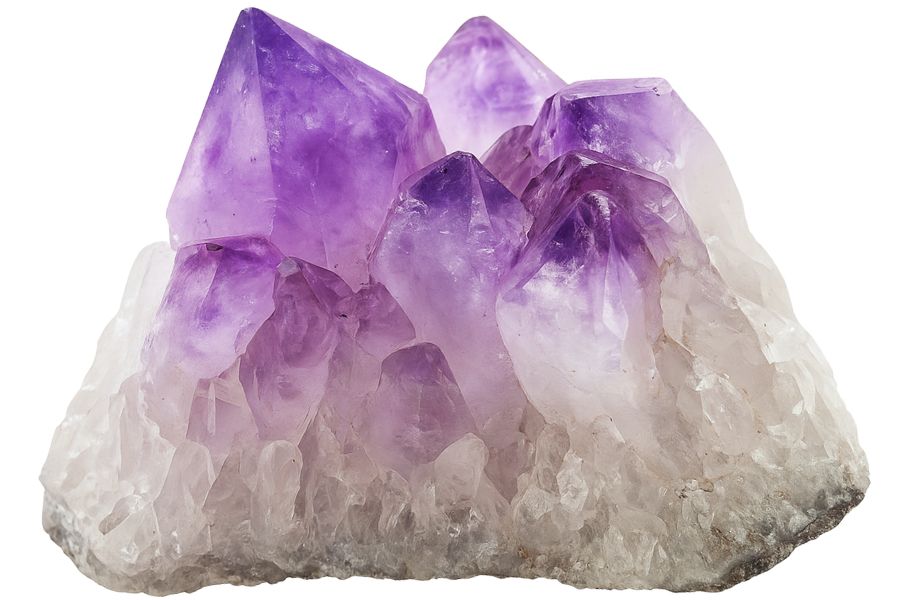Veins of amethyst in New York still turn up dazzling finds for collectors with patience and curiosity. Each purple crystal glints with a kind of quiet promise, reminding you why a day in the field is never wasted.
Plenty of rockhounds already know how rewarding it is to dig into local ground and uncover something remarkable. There’s a special satisfaction in pulling a raw crystal from the same earth that shaped it millions of years ago.
These discoveries usually happen where the right kinds of rock meet: faults, veins, or spots touched by old hydrothermal activity. Once you learn to recognize those signs, the hunt starts to feel more like a conversation with the land than a guessing game.
The key difference between wandering and finding often comes down to location. Knowing where to look can turn an ordinary trip into one that adds another gleaming piece to your New York amethyst collection.
The Different Types Of Amethyst And What They Look Like
Different environments contribute to the diverse appearances and types of this beautiful mineral.
The variety seen in amethyst is due to trace elements and impurities within the crystal structure. Elements like iron and manganese can alter the hue, leading to the beautiful spectrum of purples and other colors found in these crystals.
Brandberg Amethyst
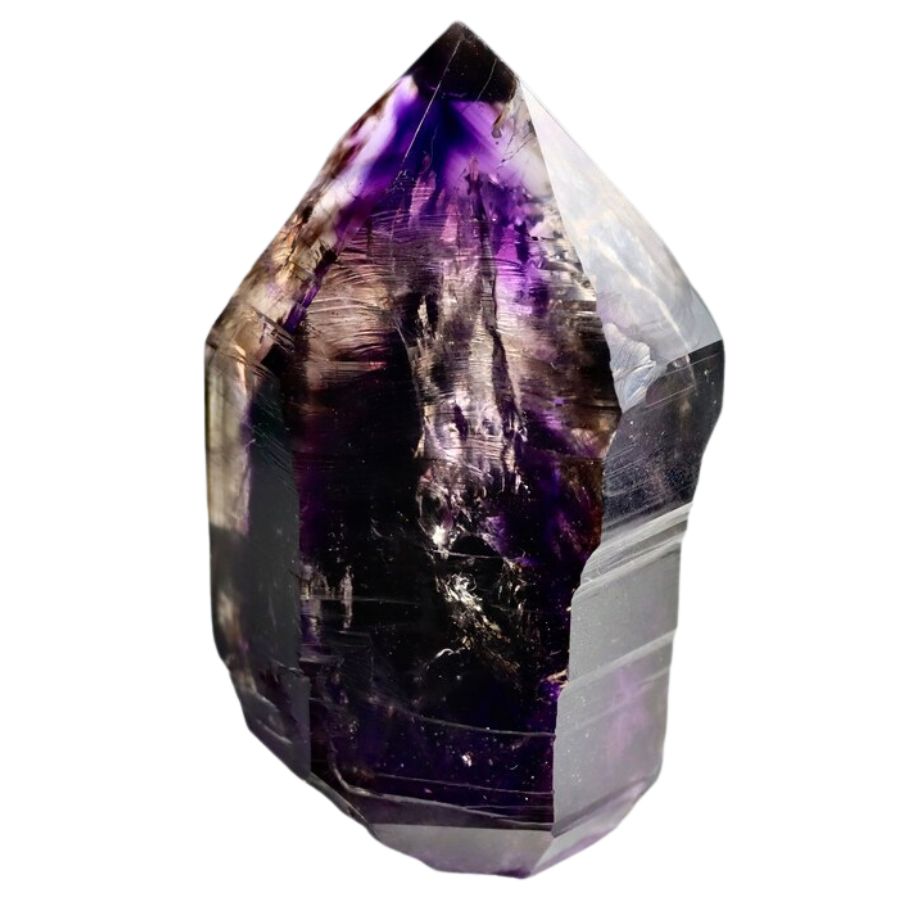
Brandberg amethyst is a captivating variety of quartz, renowned for its unique blend of elements like silicon dioxide, iron, and trace amounts of other minerals.
These components come together to form a crystal that not only holds geological significance but also showcases a striking array of hues and features.
The appearance of Brandberg amethyst is truly remarkable, characterized by its color range from deep purples to vibrant lilacs.
The varying shades are a result of the iron content within the crystal structure, which can fluctuate, leading to diverse color intensities and patterns in each specimen.
Brandberg amethyst stands out for its inclusion patterns and the presence of phantom crystals within its structure.
These internal “ghosts” are formed by layers of other minerals, offering a glimpse into the crystal’s growth history and adding to its allure for those fascinated by the wonders of the natural world.
Ametrine
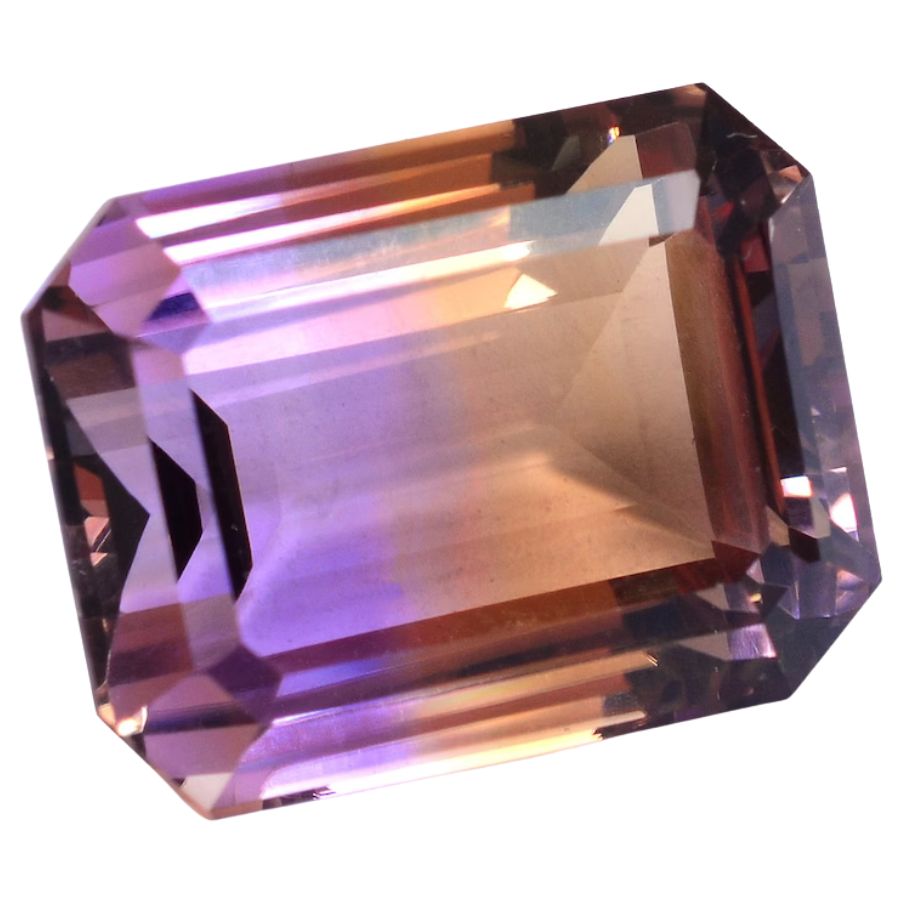
Ametrine is an intriguing mineral that captures the imagination of those interested in rocks and minerals. This unique gem is a combination of two quartz varieties: amethyst and citrine.
The beauty of ametrine lies in its striking coloration, which ranges from a blend of vibrant purple and golden yellow.
This color variation is a result of differing oxidation states of iron within the crystal, influenced by temperature and radiation exposure during formation.
Ametrine is notable for its distinct zoning of colors, where purple and yellow hues can be clearly seen in the same crystal. This feature, combined with its unique composition, sets ametrine apart from different kinds of amethyst.
Chevron Amethyst
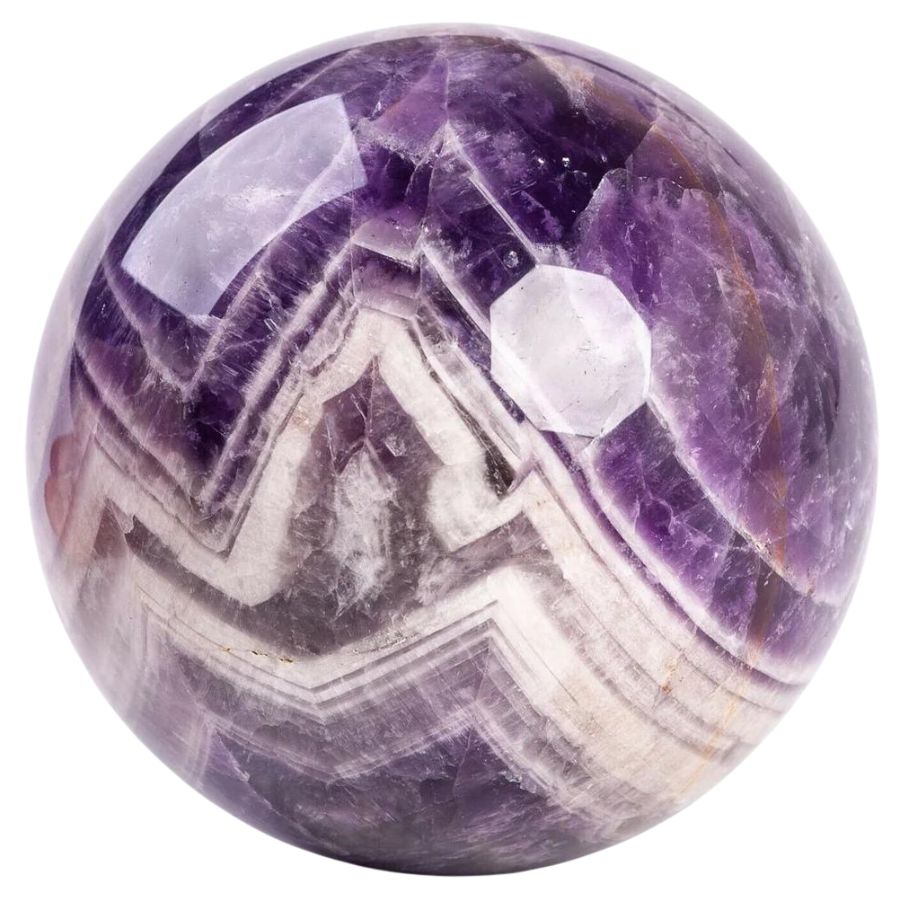
Chevron amethyst is a captivating type of amethyst known for its distinctive pattern. It’s easily recognized by its unique V-shaped or chevron patterns, which are a combination of deep purple and white or clear quartz layers.
These patterns and color variations are due to differences in iron content and other impurities in the layers, resulting in the striking contrast seen in chevron amethyst.
Chevron amethyst is not only beautiful but also a subject of interest for its formation process. The alternating layers of colors provide a visual record of the crystal’s growth history, making it a fascinating example for geological study.
Auralite
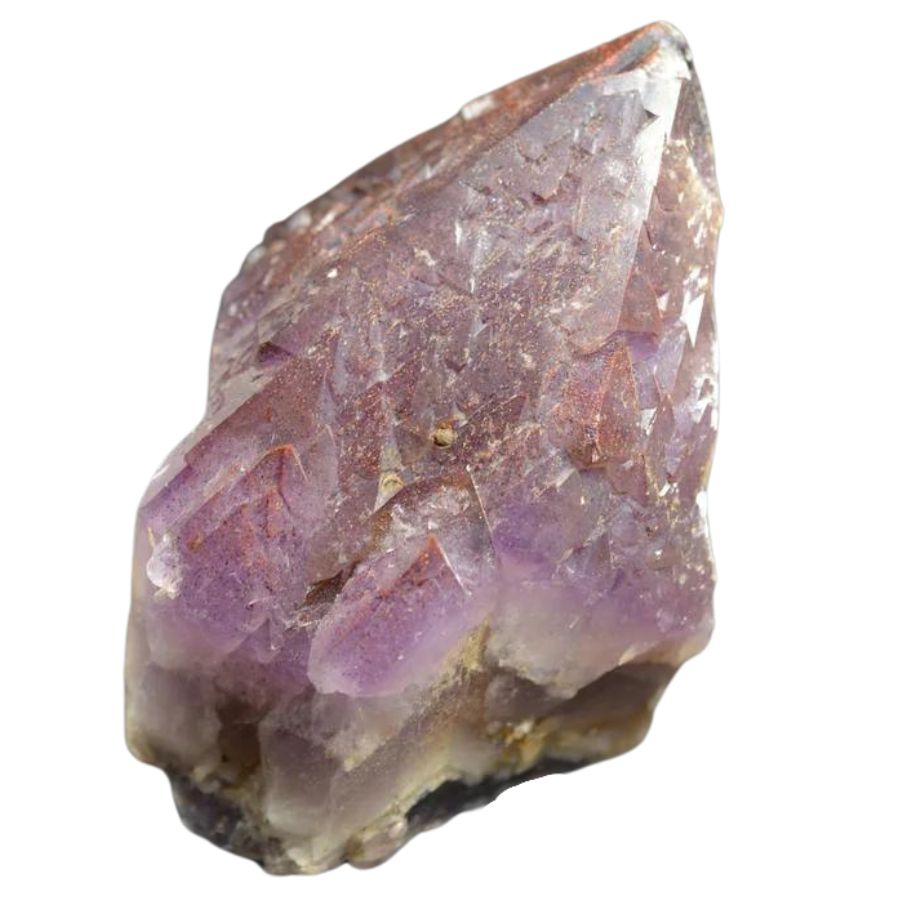
Auralite is an intriguing type of mineral that’s a combination of amethyst and several other trace minerals. Its composition includes silicon dioxide from amethyst, along with a mixture of elements like iron, copper, and titanium.
This mineral’s appearance is quite distinct, often showing a deep purple hue similar to what amethyst looks like, but with additional layers or inclusions of other colors.
These variations in color are due to the various trace minerals present in auralite, each contributing to its unique and colorful display.
A standout feature of auralite is the presence of multiple minerals within a single specimen, sometimes including up to 23 different types.
This mix not only gives auralite its diverse color range but also makes it a fascinating subject for those studying minerals and their properties.
Prasiolite
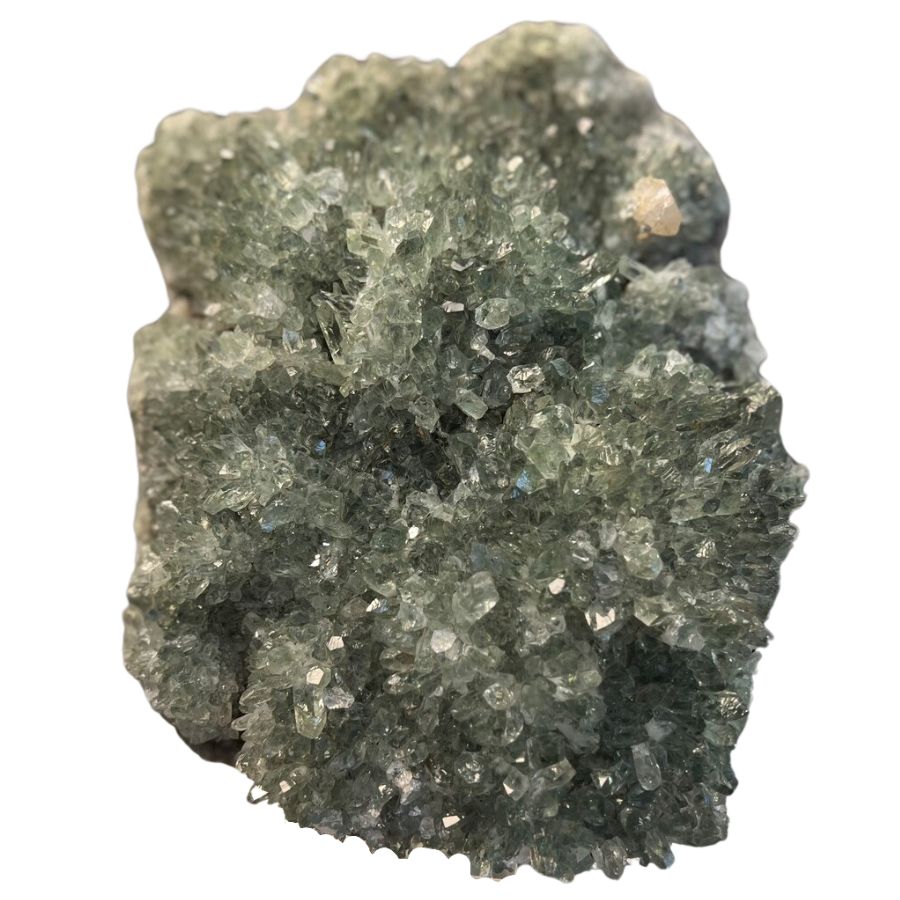
Prasiolite is an interesting variety of quartz. It often contains traces of iron, which play a key role in giving prasiolite its unique color.
This mineral is known for its beautiful green color, which can range from a light, almost transparent green to a deeper, more olive shade.
The green color of prasiolite is usually the result of heat treatment, either occurring naturally in the earth or artificially, transforming certain types of amethyst or yellowish quartz into prasiolite.
Naturally-occurring prasiolite is rare, as most available prasiolite is created through artificial means.
Cacoxenite amethyst

Cacoxenite is an intriguing mineral primarily composed of iron, aluminum, and phosphate, along with other elements like oxygen and hydrogen. This combination of elements gives cacoxenite its unique chemical makeup and properties.
Cacoxenite typically exhibits a striking golden-yellow to brownish-yellow color. This coloration is mainly due to the presence of iron in its structure, which imparts the rich hues that characterize this mineral.
A notable feature of cacoxenite is that it often forms as an inclusion within other minerals, such as amethyst, creating a beautiful contrast.
These inclusions of cacoxenite can appear as radiating or feathery formations, adding an intricate and fascinating aspect to the host mineral.
Phantom Amethyst
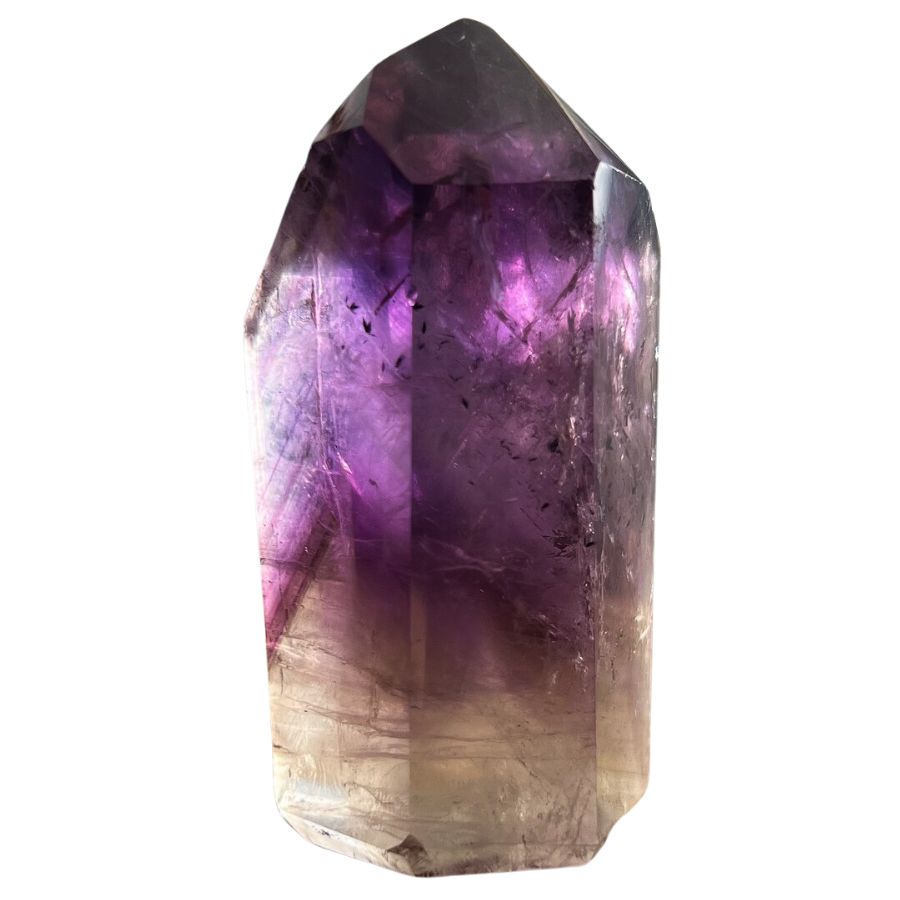
Phantom amethyst is a fascinating variety of amethyst. It stands out due to the presence of “phantoms” – ghost-like inclusions within its structure, which give it a distinct and layered look.
In phantom amethyst, one can observe a range of colors from deep purples to lighter hues, often appearing in layers or as phantom shapes within the crystal.
These color variations are typically due to trace amounts of iron and other minerals that get trapped during the crystal’s growth, influencing its final color.
Phantom amethyst provides a visual record of the crystal’s growth history. The crystal outlines and layers within the stone are formed by pauses in the crystal’s growth, offering a glimpse into geological processes over time.
Pink Amethyst
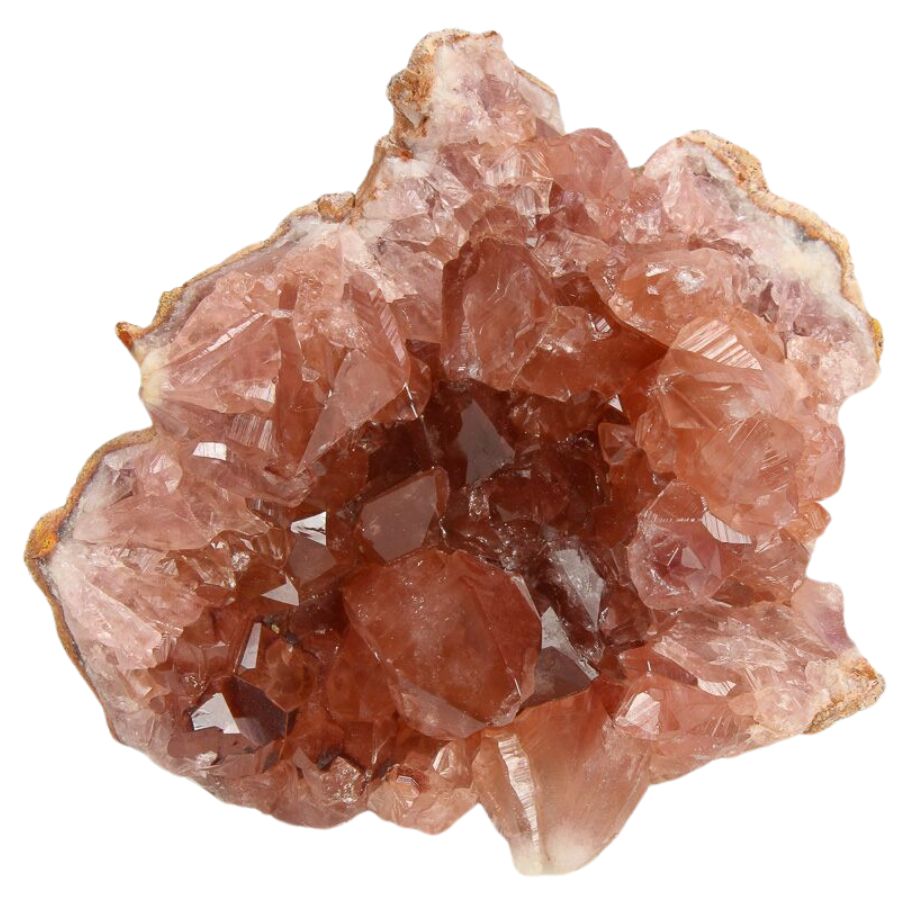
Pink amethyst is a unique and relatively rare variety of the common mineral amethyst. The presence of trace elements, particularly iron, contributes to its distinct pink hue.
The appearance of pink amethyst ranges from a delicate, light pink to a deeper, more vivid pink.
This variation in color is largely due to the concentration and distribution of iron within the crystal, which affects how light interacts with the mineral.
Pink amethyst is its often found in geodes or clusters, where multiple crystals grow together in a captivating display.
Amethyst Geodes
Amethyst geodes are fascinating natural formations, with traces of iron giving them their famous purple color. These geodes form in volcanic rocks and are essentially hollow, lined with amethyst crystals.
A key feature of amethyst geodes is their crystal-lined cavity, which creates a stunning natural display. When you look inside an amethyst geode, you’ll see a range of purple hues, from light lavender to deep violet.
The color variation is due to the amount of iron and the specific conditions under which the crystals formed, such as temperature and the presence of other trace elements.
Geodes can vary greatly in size, from small enough to fit in your hand to large enough to stand in, and each one is unique in its crystal formation and color pattern.
Cactus Amethyst
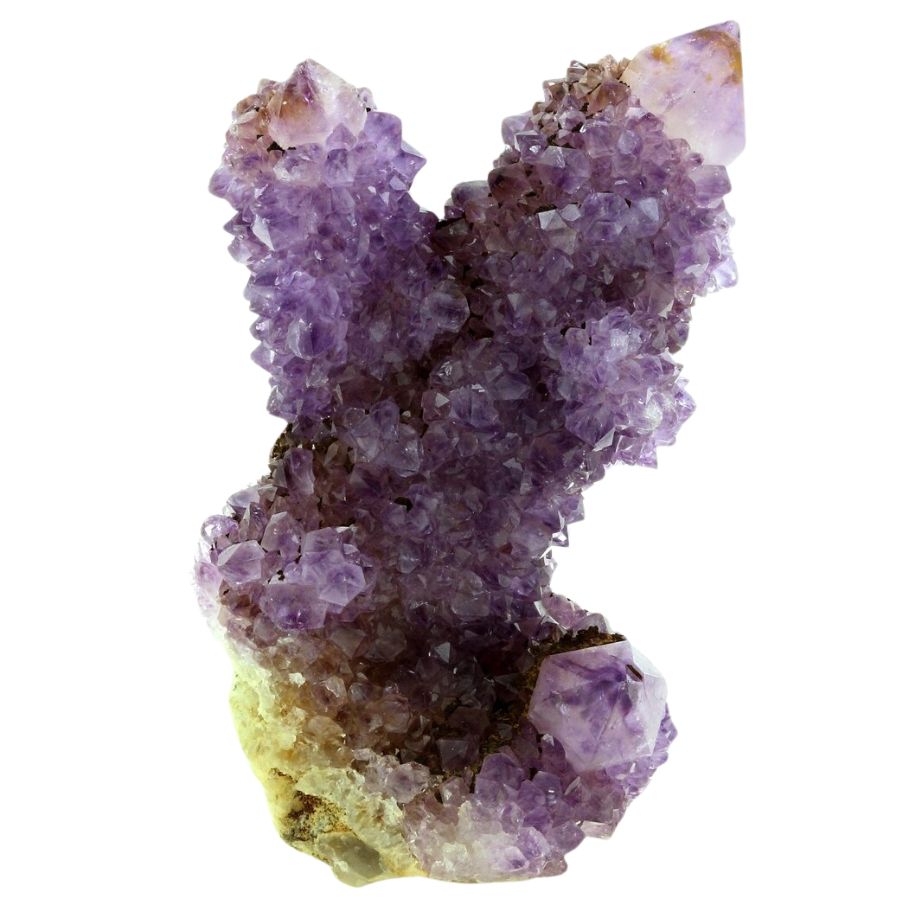
Cactus amethyst is also known as spirit quartz. Its unique structure is enriched with additional minerals, which contribute to its distinctive appearance.
This type of amethyst is characterized by a central quartz crystal covered in smaller crystal growths, giving it a spiky, cactus-like appearance.
The color ranges from pale lilac to deep purple, with the variations largely influenced by the amount of iron and other trace elements within the crystals.
A notable feature of cactus amethyst is the way the smaller crystals radiate outward from the central crystal.
This formation not only creates a stunning visual effect but also makes each piece of cactus amethyst a unique and fascinating specimen.
Regarding the price of amethyst, it can vary significantly based on the size, quality, and depth of color. While smaller, less vibrant pieces are relatively affordable, larger specimens with deep, rich colors can be quite valuable.
Scepter Amethyst
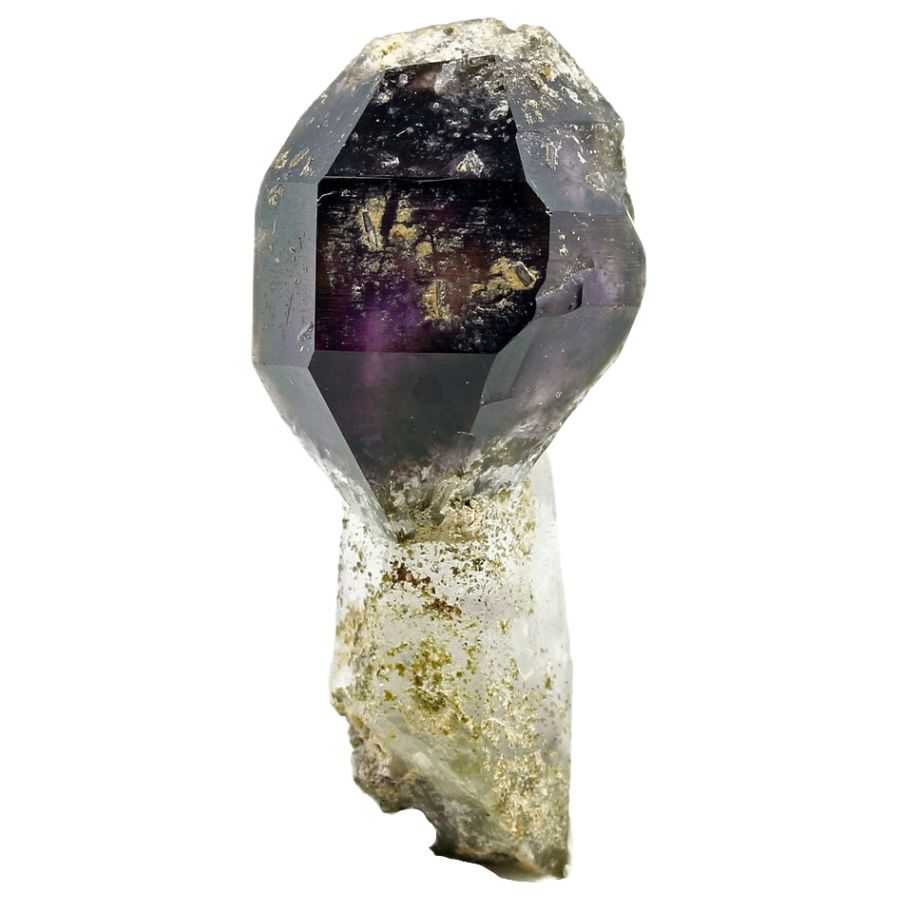
Scepter amethyst gets its name from its distinctive scepter-like formation, where a larger crystal cap sits atop a smaller crystal stem.
The color variations in scepter amethyst are influenced by the amount of iron and other trace elements within the crystal, coupled with the specific conditions under which it formed.
A key feature of scepter amethyst is its symbolic scepter shape, representing a crystal formation process where a second phase of growth occurs on an already-formed crystal base. This creates a striking and regal scepter-like appearance.
Smoky Amethyst
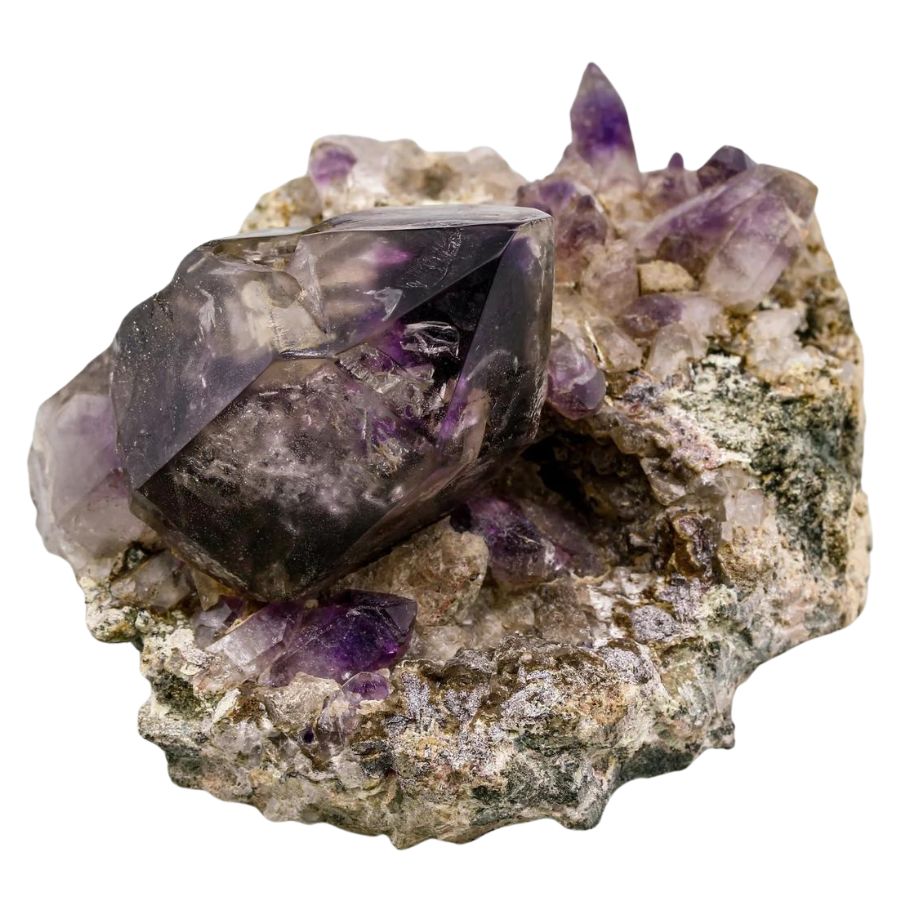
Smoky amethyst is a unique variation among amethyst types that combines features of both smoky quartz and amethyst. The presence of trace elements like iron and aluminum gives it its unique coloration.
This mineral exhibits a blend of smoky brown and purple hues, creating a captivating visual effect. This is due to natural irradiation and the varying amounts of impurities, which influence the depth and intensity of both the smoky and purple colors.
A notable feature of smoky amethyst is its dual-tone appearance, which is not commonly found in other quartz varieties.
- The deep experience and understanding of our team about the area
- Recommendations from local groups and clubs
- How easy it is to get the a particular location
- Safety and potential hazards when collecting
- Weighing private and public locations
- The ability for both experienced and novice amethyst enthusiasts to find great samples
With these factors in mind we’ve been able to put together a fantastic list that just about anyone can use!
The Best Spot To Find Amethyst in New York

New York abounds in great spots for gem mining, but not all of them bear Amethysts naturally. In fact, there’s quite limited sites here where you can find this amazing gemstone. If you’re planning to go here to find the coveted Amethyst, better check out these places:
Always Confirm Access and Collection Rules!
Before heading out to any of the locations on our list you need to confirm access requirements and collection rules for both public and private locations directly with the location. We haven’t personally verified every location and the access requirements and collection rules often change without notice.
Many of the locations we mention will not allow collecting but are still great places for those who love to find beautiful rocks and minerals in the wild without keeping them. We also can’t guarantee you will find anything in these locations since they are constantly changing.
Always get updated information directly from the source ahead of time to ensure responsible rockhounding. If you want even more current options it’s always a good idea to contact local rock and mineral clubs and groups
Toothaker Creek State Forest
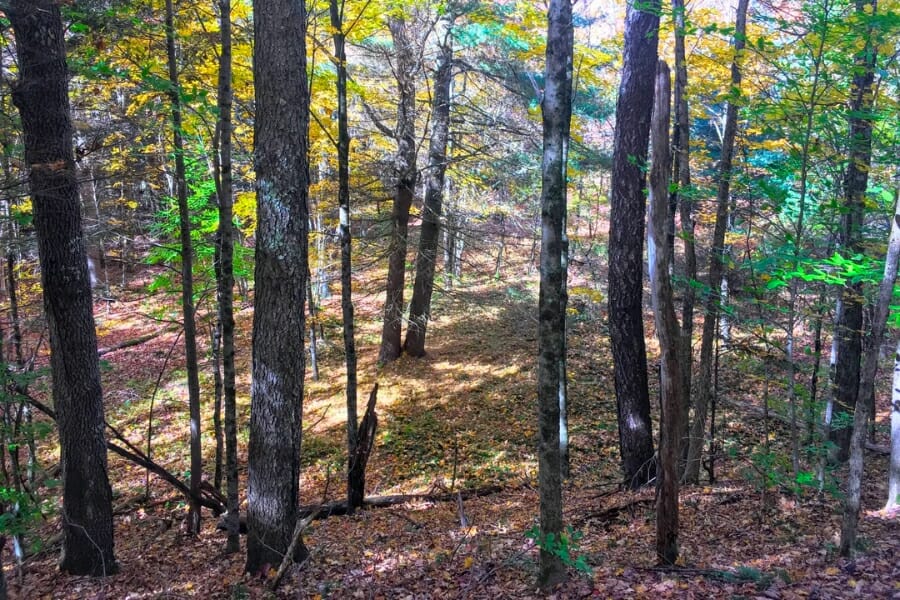
Nestled in the scenic landscape of New York, Toothaker Creek State Park offers a tranquil retreat with its captivating geography and natural beauty. It spans over acres of diverse terrain, featuring rolling hills, verdant forests, and the picturesque Toothaker Creek flowing through its heart.
This area’s terrain has a mix of deciduous and coniferous forests, creating a captivating tapestry of colors during the changing seasons. The park’s geology is equally intriguing, with ancient rock formations, including shale and limestone, dating back millions of years.
When you go here after reviewing New York’s local collecting guidelines, you can venture into the park’s rocky outcrops and explore its streams and creeks to discover pockets of Amethyst. However, it’s important to note that finding one here requires patience, persistence, and a keen eye, as Amethyst may not be readily available in abundance.
Where we found amethyst in Toothaker Creek State Forest
Amethysts naturally occur in the prospects of Toothaker Creek State Forest.
If you want REAL results finding incredible rocks and minerals you need one of these 👇👇👇
Finding the coolest rocks in isn’t luck, it's knowing what to look for. Thousands of your fellow rock hunters are already carrying Rock Chasing field guides. Maybe it's time you joined the community.
Lightweight, mud-proof, and packed with clear photos, it’s become the go-to tool for anyone interested discovering what’s hidden under our red dirt and what they've already found.
Join them, and make your next rockhounding trip actually pay off.
What makes it different:
- 📍 Find and identify 140 incredible crystals, rocks, gemstones, minerals, and geodes across the USA
- 🚙 Field-tested across America's rivers, ranchlands, mountains, and roadcuts
- 📘 Heavy duty laminated pages resist dust, sweat, and water
- 🧠 Zero fluff — just clear visuals and straight-to-the-point info
- ⭐ Rated 4.8★ by real collectors who actually use it in the field
Carbola Mine
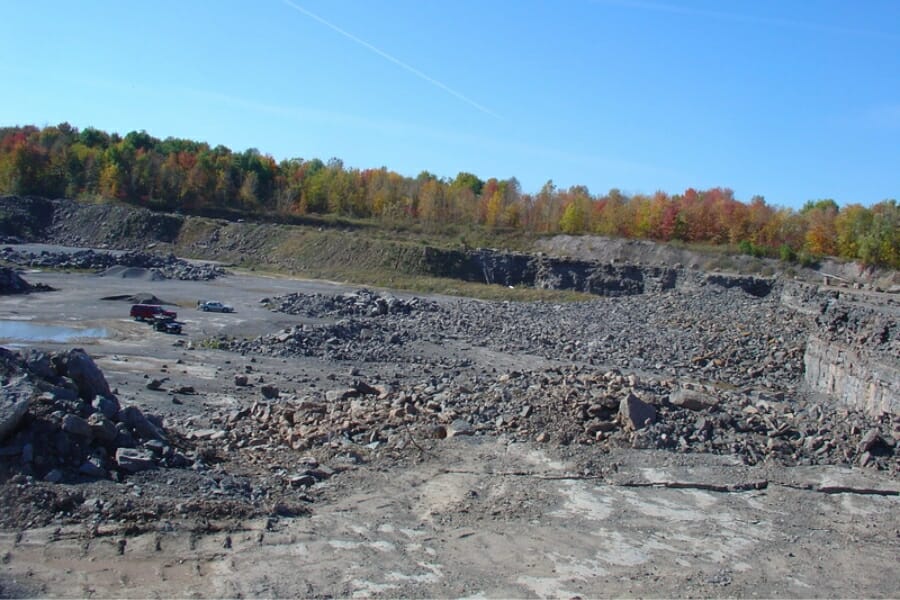
Carbola Mine is historic mine that offers rockhounds a unique opportunity to explore its geological wonders and potentially uncover the coveted gemstone, Amethyst.
Located in an area renowned for its rich mineral deposits, the mine is characterized by its rugged terrain and rocky outcrops. Its geography showcases a mix of rolling hills, dense forests, and rocky slopes, providing an enchanting backdrop for exploration. The terrain can be challenging, requiring proper footwear and caution when navigating the rocky areas.
Carbola Mine’s geology is intriguing, with a combination of quartz veins and other mineral formations that have the potential to yield Amethyst specimens. Its history dates back to the early 19th century when it was a notable site for mining various minerals, including Amethyst. While the mine is no longer in active operation, it remains a popular destination for rockhounds
Where we found amethyst in Carbola Mine
We recommend you explore the area mine dumps of Carbola Mine, where the elusive Amethyst can be uncovered.
Carbola Mine is one only of the many Amethyst mining spots throughout the country.
Dodgewood Road

Dodgewood Road is a destination that holds the promise of hidden treasures and natural wonders. This scenic road winds through a picturesque landscape, offering a glimpse into the geological marvels of the area and the possibility of discovering Amethyst.
The geography surrounding this road is diverse and captivating. It traverses through lush forests, rolling hills, and alongside sparkling creeks, providing a delightful backdrop for exploration. The surrounding area has natural beauty, with an abundance of flora and fauna that add to the enchantment of the journey.
The terrain along Dodgewood Road can vary, ranging from gentle slopes to rocky outcrops. As you venture deeper into the region, you may encounter areas with exposed bedrock and geological formations that harbor the potential for Amethyst deposits.
Where we found amethyst in Dodgewood Road
Rockhounds have found Amethyst in the road cuts of Dodgewood Road.
Wesley Hills
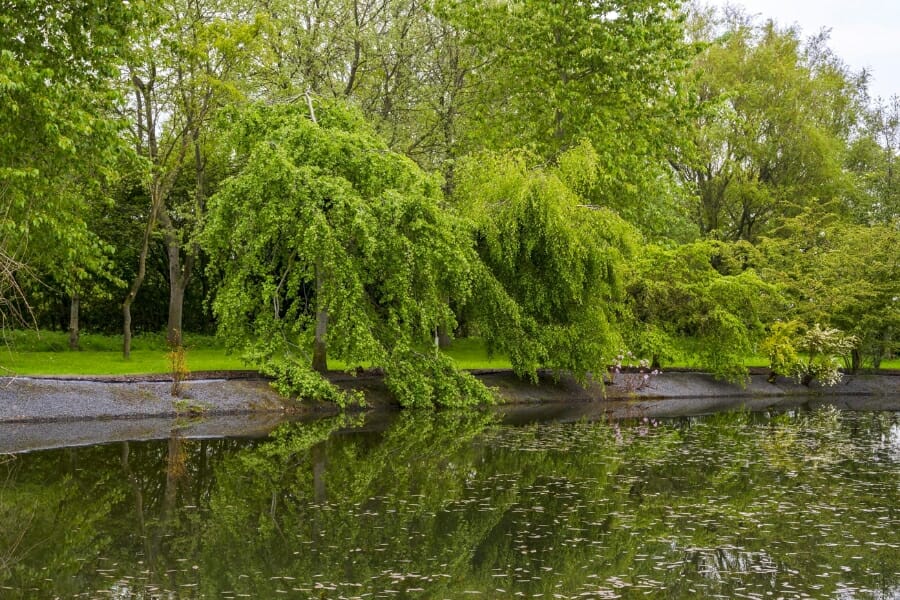
Wesley Hills combines natural beauty with the possibility of discovering the enchanting Amethyst. This picturesque area serves a serene geography, diverse terrain, and potential for geological wonders.
Wesley Hills is marked by rolling hills, verdant forests, and tranquil streams. Its scenic beauty offers a peaceful retreat for nature enthusiasts and seekers of natural treasures. As you explore the area, you may encounter rocky outcrops and exposed bedrock, providing opportunities to uncover the hidden gemstones beneath the earth’s surface.
The terrain of Wesley Hills can vary, ranging from gentle slopes to rocky formations. These formations offer the potential for Amethyst deposits, adding an element of excitement and anticipation for gemstone enthusiasts.
Where we found amethyst in Wesley Hills
To find Amethysts, you can explore the different nooks and crannies in and around Wesley Hills.
Mount Pleasant

Mount Pleasant is known for its stunning geography, diverse terrain, and the potential for uncovering Amethyst. This scenic area offers a perfect blend of natural beauty and the excitement of discovering precious treasures.
Showcasing rolling hills, verdant valleys, and serene streams, Mount Pleasant provides a serene backdrop for exploration. Its captivating landscapes make it a popular destination for outdoor enthusiasts and nature lovers. As you traverse the region, you may encounter rocky outcrops and geological formations that offer the possibility of finding Amethyst.
The terrain of Mount Pleasant can vary, featuring gentle slopes, rocky cliffs, and forested areas. These geological features create favorable conditions for the formation of Amethyst deposits. When you visit here, you can navigate through the terrain, keeping a keen eye for pockets and veins that may contain these exquisite gemstones.
Where we found amethyst in Mount Pleasant
We found Amethyst deposits after exploring the area fields of Mount Pleasant.
Common Amethyst-Hunting Questions

Here are the questions most commonly-asked by rockhounds looking to explore New York. We’ll answer them for you just in case you have the same questions, too.
Where can you find Amethyst Geodes in New York?
Unfortunately, New York doesn’t have naturally occurring Amethysts Geodes. This doesn’t mean, though, that you can’t find or take home one from here. In fact, we have plenty gem shops that offer Amethyst Geodes and more. You can checkout our list below.
Is it illegal to collect amethyst in New York?
Collecting Amethyst in New York is legal for as long as you abide by our local collecting guidelines. Also, do extra research on the specific area that you are planning to explore and familiarize yourself with any area-specific rules and regulations that you need to observe. Some areas may also be restricted, so make sure you are respecting these guidelines.
The Best Places To Buy Amethyst In New York
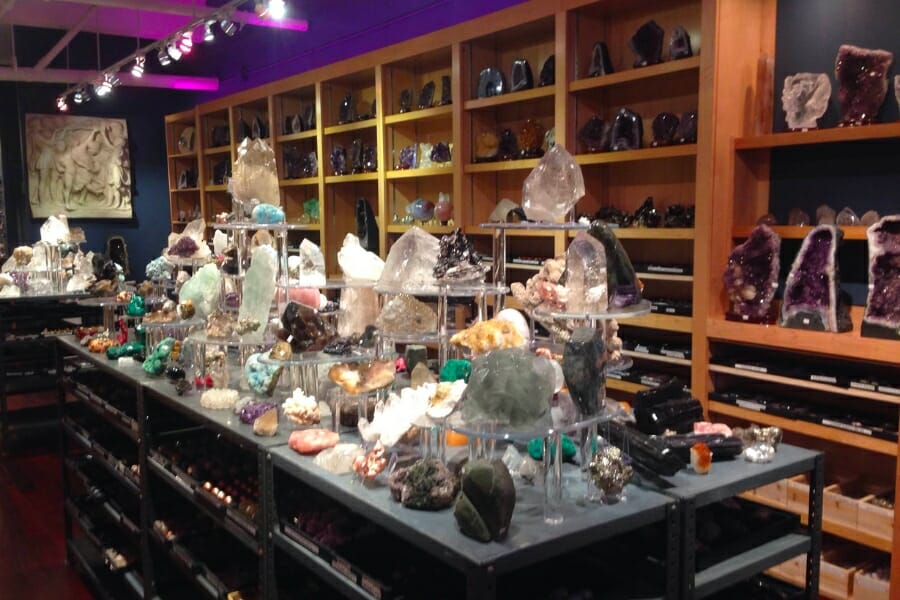
Finding Amethyst in New York is possible, but it’s not exactly a walk in park due to its limited deposits here. So if you’re looking for an Amethyst with a specific characteristic that will go well with your collection, you may want to consider visiting our local gem shops.
Some of the best ones that we have are as follows:
Astro Gallery of Gems – 417 5th Ave, New York, NY 10016
Rock Star Crystals – 146 W 26th St, New York, NY 10001
Natural Gems – 59 Lee Ave, Brooklyn, NY 11211
Lucky Gems and Jewellery Fty Ltd – 1220 Broadway 3rd Floor, New York, NY 10001
Grace Gems Ltd – 576 5th Ave Suite 1005, New York, NY 10036
A & C Gem Trading Corporation – 44 W 47th St #23, New York, NY 10036
Wilensky Exquisite Minerals – 450 W 17th St, New York, NY 10011
Additional Places To Find Amethyst In Nearby States
Check out the guides we made for the nearby states where you can find amethysts as well:
If you have any recommendations for our list please leave a comment below!

